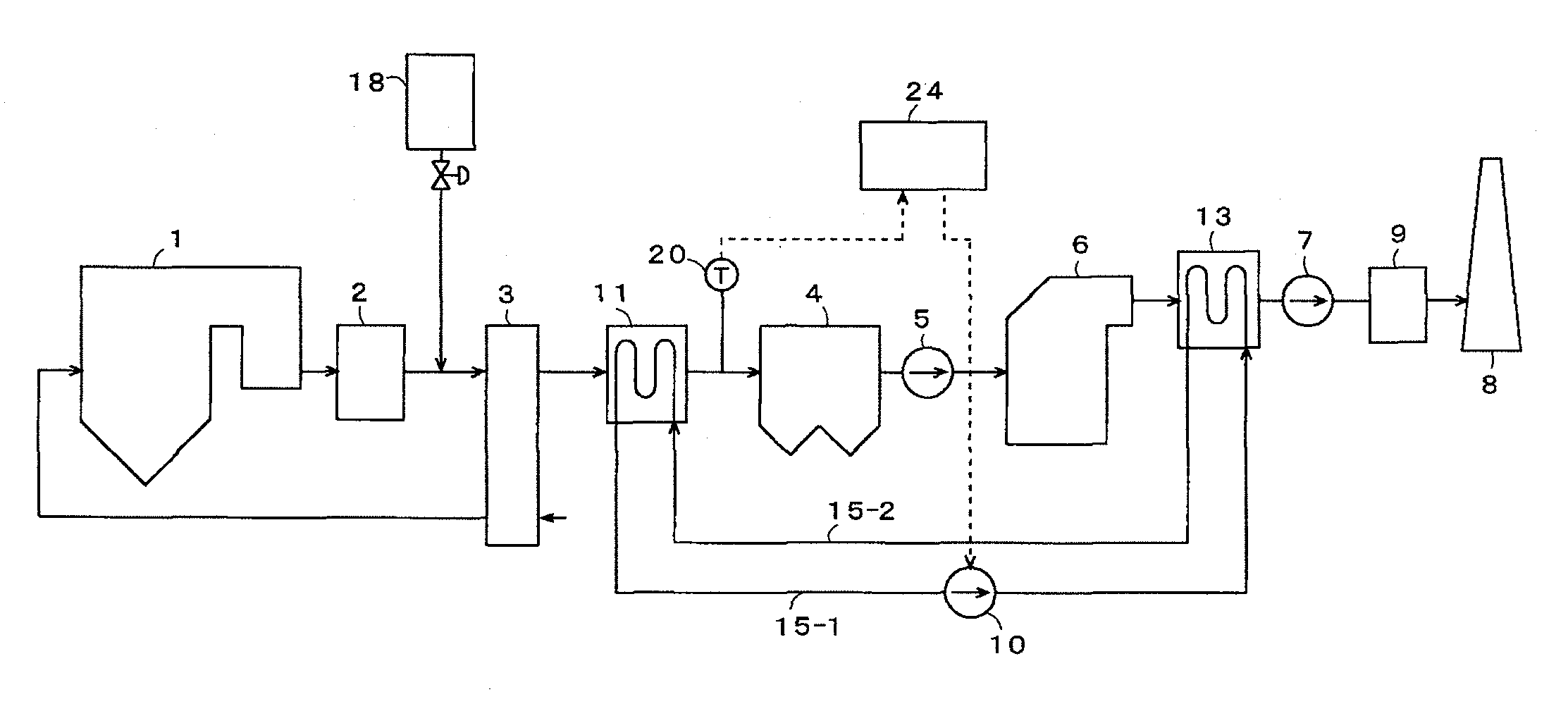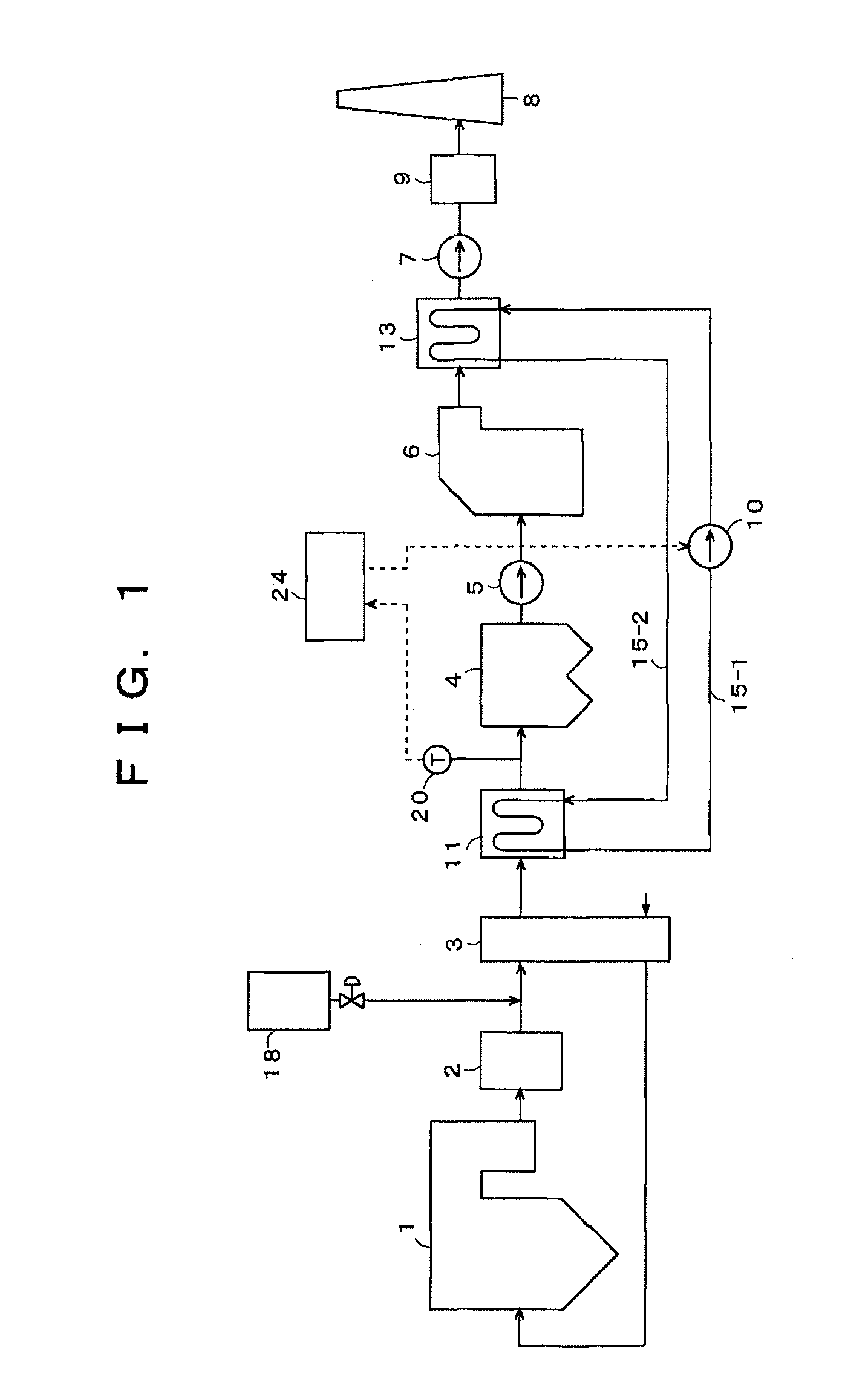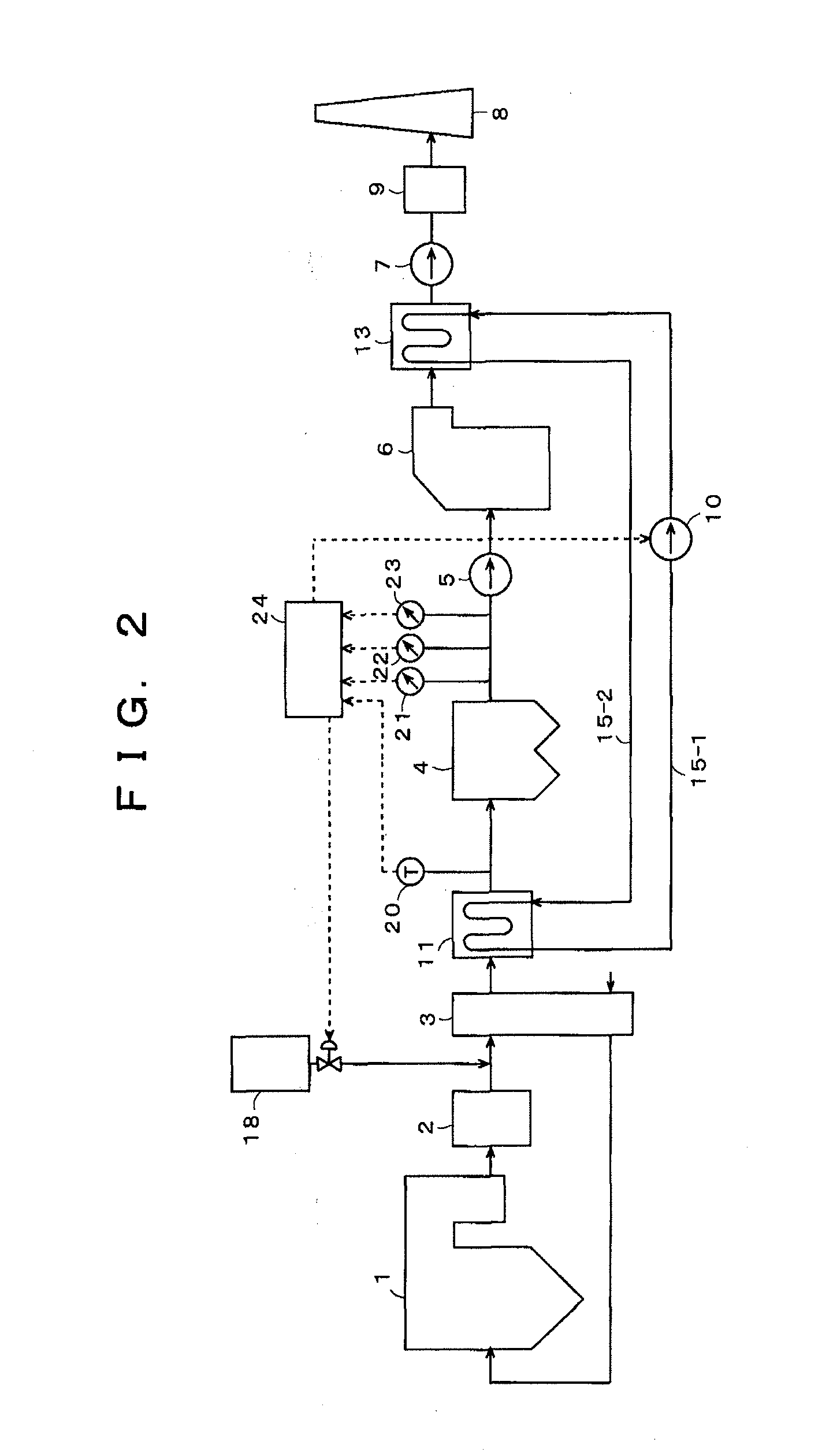Method and apparatus for treating discharge gas
a technology of exhaust gas and discharge gas, which is applied in the direction of machines/engines, process and machine control, electric supply techniques, etc., can solve the problems of high toxicity and recent stricter emission restrictions, and achieve the reduction of sulfur trioxide concentration in exhaust gas, reducing the concentration of heavy metals in exhaust gas discharged from the combustion apparatus 1, and eliminating reliably.
- Summary
- Abstract
- Description
- Claims
- Application Information
AI Technical Summary
Benefits of technology
Problems solved by technology
Method used
Image
Examples
embodiment 1
[0057]FIG. 1 is a block diagram of an exhaust gas treating system of an embodiment of the present invention. Concentrations of exhaust gas components discharged from a boiler are: a soot / dust concentration of 20 g / m3N; a NOx concentration of 200 ppm; a SOx concentration of 4000 ppm; and an Hg concentration of 10 μg / m3N. As shown in FIG. 1, with the exhaust gas treating system according to the present embodiment, an exhaust gas discharged from the boiler or other combustion apparatus 1 is introduced into NOx removal equipment 2, and, after elimination of nitrogen oxides in the exhaust gas to not more than 20 ppm by a denitration catalyst, etc., inside the NOx removal equipment 2, the exhaust gas is introduced into an air preheater 3. At a front stage of the air preheater 3, a sulfur trioxide (SO3) removing agent is added by a sulfur trioxide (SO3) removing agent supply unit 18.
[0058]A method for adding the SO3 removing agent is not restricted in particular, and supplying in a form of...
embodiment 2
[0067]With Embodiment 2 of the present invention, shown in FIG. 2, an example of using a neutralizing agent as the sulfur trioxide (SO3) removing agent is illustrated. By addition, for example, of sodium carbonate (Na2CO3) as the neutralizing agent from the SO3 removing agent supply unit 18 shown in FIG. 2, the concentration of SO3 in the exhaust gas is reduced according to Formula (2) shown below:
SO3+Na2CO3→Na2SO4+CO2 (2)
[0068]FIG. 4 shows the variation of the mercury concentration in the exhaust gas when the neutralizing agent (Na2CO3) is added at molar equivalents with respect to the sulfur trioxide (SO3) in the exhaust gas, and the mercury concentration in the exhaust gas was minimized when the neutralizing agent (Na2CO3) was added at an amount of 1 molar equivalent with respect to the sulfur trioxide (SO3).
[0069]FIG. 5 shows the variation of concentrations of acidic substances (SO3, HCl) in the exhaust gas when the neutralizing agent (Na2CO3) is added at molar equivalents with...
embodiment 3
[0081]With Embodiment 3 of the present invention, an example of using an adsorbent as the SO3 removing agent is illustrated. Because besides using the adsorbent as the SO3 removing agent, the present embodiment is the same as Embodiment 1 and Embodiment 2, description of redundant portions is omitted.
[0082]For example, powder activated carbon is added as the absorbent from the SO3 removing agent supply unit 18 of FIG. 1 or FIG. 2, and the SO3 concentration in the exhaust gas is reduced by SO3 becoming adsorbed to the adsorbent. As mentioned above, it is considered that when mercury coexists with sulfur trioxide (SO3) in the exhaust gas, the SO3 becomes adsorbed with priority over mercury to the active sites of the non-combusted portions, etc., in the ash. It is thus presumed when the adsorbent is added into the exhaust gas in which sulfur trioxide (SO3) and mercury coexist, SO3 becomes adsorbed with good efficiency to the adsorption active sites of the adsorbent.
[0083]Although in th...
PUM
| Property | Measurement | Unit |
|---|---|---|
| temperature | aaaaa | aaaaa |
| temperature | aaaaa | aaaaa |
| temperature | aaaaa | aaaaa |
Abstract
Description
Claims
Application Information
 Login to View More
Login to View More - R&D
- Intellectual Property
- Life Sciences
- Materials
- Tech Scout
- Unparalleled Data Quality
- Higher Quality Content
- 60% Fewer Hallucinations
Browse by: Latest US Patents, China's latest patents, Technical Efficacy Thesaurus, Application Domain, Technology Topic, Popular Technical Reports.
© 2025 PatSnap. All rights reserved.Legal|Privacy policy|Modern Slavery Act Transparency Statement|Sitemap|About US| Contact US: help@patsnap.com



